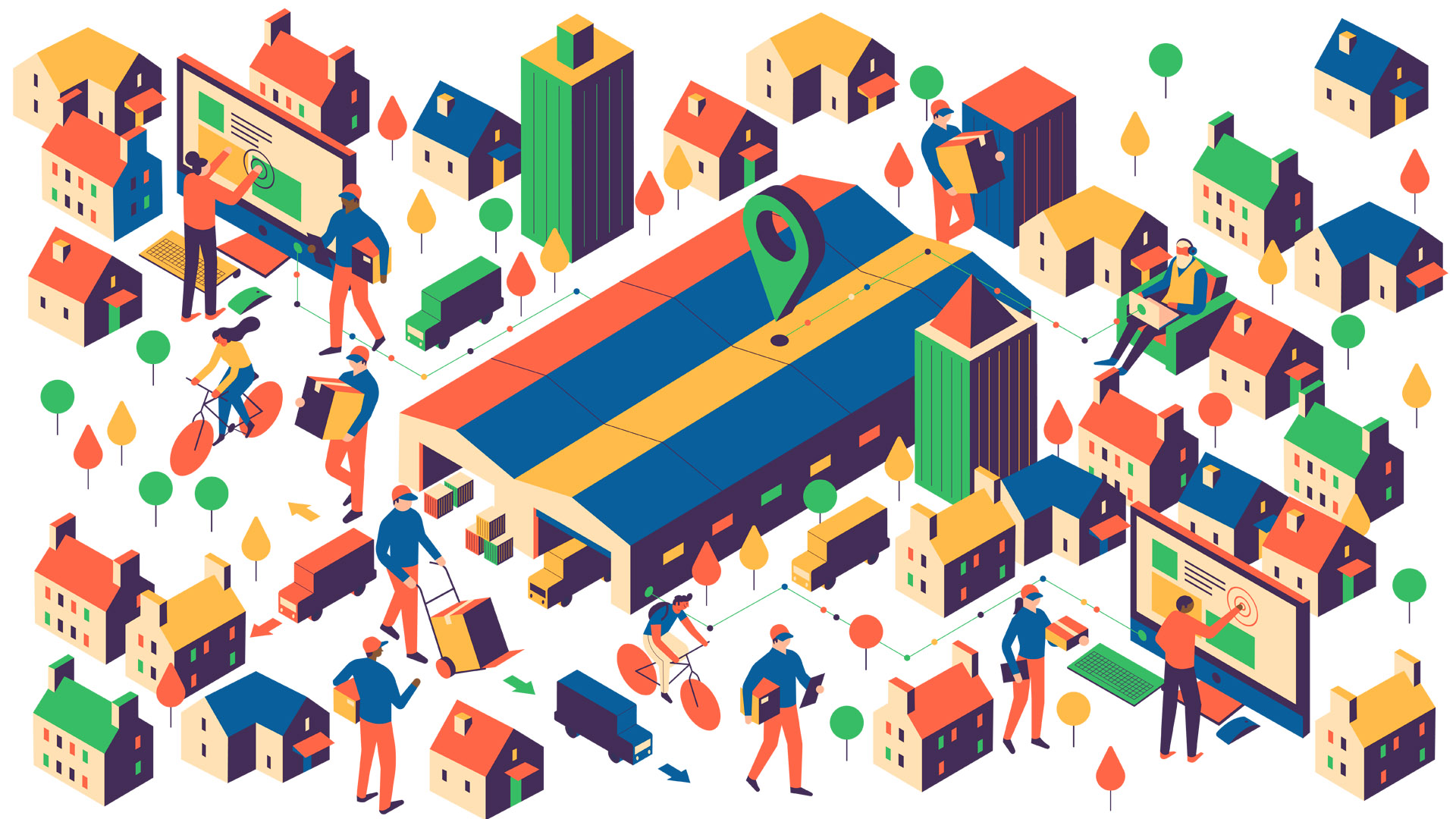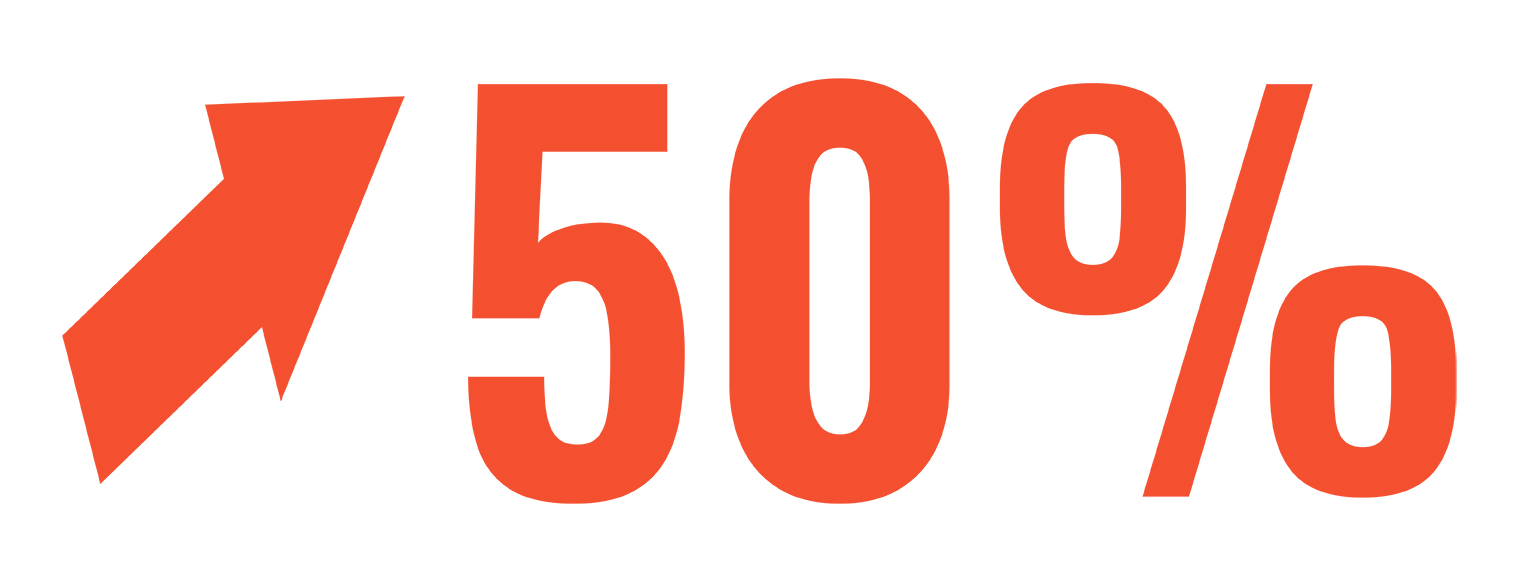
The dominance of internet retail over the traditional high street during the past 12 months has meant that demand for all kinds of logistical spaces – such as warehouses and fulfilment centres – is soaring. Around the world, huge new warehouses are being constructed on the outskirts of cities or on major transport routes, as our online baskets continue to swell.
“Online sales have grown by 50% in nine months, accelerating a trend that would have taken five years in normal circumstances,” says Paul Martin head of retail with KPMG.
Between click and delivery is the crucial middle-man of logistics hubs, a building type which has also grown in significance during the pandemic. Martin describes the warehousing market as “remaining very hot with values rising.”
Schemes like a 550,000ft2 project in Bicester, UK are becoming increasingly typical, this one the work of Ergo Real Estate and NFU Mutual in a joint venture as Aver Property, working with developer Albion Land. More than £24 million has been invested in the development of five prominent industrial and warehousing units, situated roughly halfway between two of England’s largest cities – London and Birmingham.
“It’s a simple supply and demand dynamic,” says Martin Jepson FRICS, founder of Ergo Real Estate. “As well as the race for the online platform, there are Brexit-related concerns of needing extra capacity in the UK. There’s also the ‘flight to quality’ issues: the warehousing market for a number of years has been operating out of substandard premises and now spatial requirements are being upgraded.”
Basilio González Aránguez MRICS, who has 20 years’ experience in real estate, reports a buoyant mood in Spain right now too. “Part of the reason is e-commerce had a lack of penetration so there was a bit of catching up to do,” he says. There are some impressive statistics to match, with the biggest growth in Madrid where stock has increased by 50% in the last six years, going from eight to 12m m2 of logistics space. Madrid added 1.2m m2 during 2021 and Barcelona’s warehouse space increased by 400,000m2 this year.
“Other communities that that are growing in terms of logistics are Zaragoza and also Malaga and Bilbao,” adds González Aránguez. As for what’s creating this growth, he says that in addition to online retail there is “restructuring of operations and aggregating of different warehouses into ‘big boxes’.”
It’s a similar story 5,000 miles away in India, says Sumeet Anand MRICS, ex-global infrastructure and logistics leader at Genpact. “With the boom in the demand on online orders through Amazon, eBay and Flipkart there is certainly a significant growth across logistics and warehousing. Most of the growth is visible on the outskirts of cities as this helps maintain lower costs.”
Anand highlights multiple projects happening in Bhiwandi on the outskirts of Mumbai and also in Faridabad on the border of Delhi and Gurgaon, a city to the south of India’s capital. Further evidence of India’s growth is apparent in the 2019 joint venture between US-based private equity company Blackstone Group and Greenbase, a Hiranandani Group firm, to develop around 1.1m m2 of industrial and warehousing space across India in the next few years.
As for whether this pattern is set to continue, Anand says: “I think this trend will stay for the next two to three years at least, if not more and we may see a plateau in four to five years’ time.” González Aránguez is mostly in agreement: “The sector keeps expanding at the same pace due to the entrance of new players and massive investment in the sector: investment volume tripled from 2014 to 2019. Investment before COVID-19 was €2bn and last year went down to approximately €1.5bn, which is an exceptional figure taking into account the long term average and 2020’s circumstances of dealing with the pandemic.”
Getting products from A to B is experiencing change in other stages too, says Paul Martin: “Grocery stores will be downsized and repurposed into micro fulfilment hubs.” Groceries and fashion have pivoted to the use of the ‘dark store’. These fulfilment centres can be found in more densely populated areas and are a phenomenon which has grown particularly in the US, with familiar stateside names such as Walmart and Target embracing the approach – spaces have aisles of goods but are dedicated to online order picking with no customers or point of sale. Some hybrid variations involve customers accessing just part of the store. The likes of Sainsburys and Tesco have dark stores in the UK too.
As we continue to emerge from the pandemic, it seems the way we purchase goods will not easily shift from the online model we’ve become accustomed to. Not only will there be continued investment in warehousing and logistics, but the types of property we need to meet the ever-increasing demand for online retail are evolving too.


“Online sales have grown by 50% in nine months, accelerating a trend that would have taken five years in normal circumstances”


_5%20Apr.jpg)